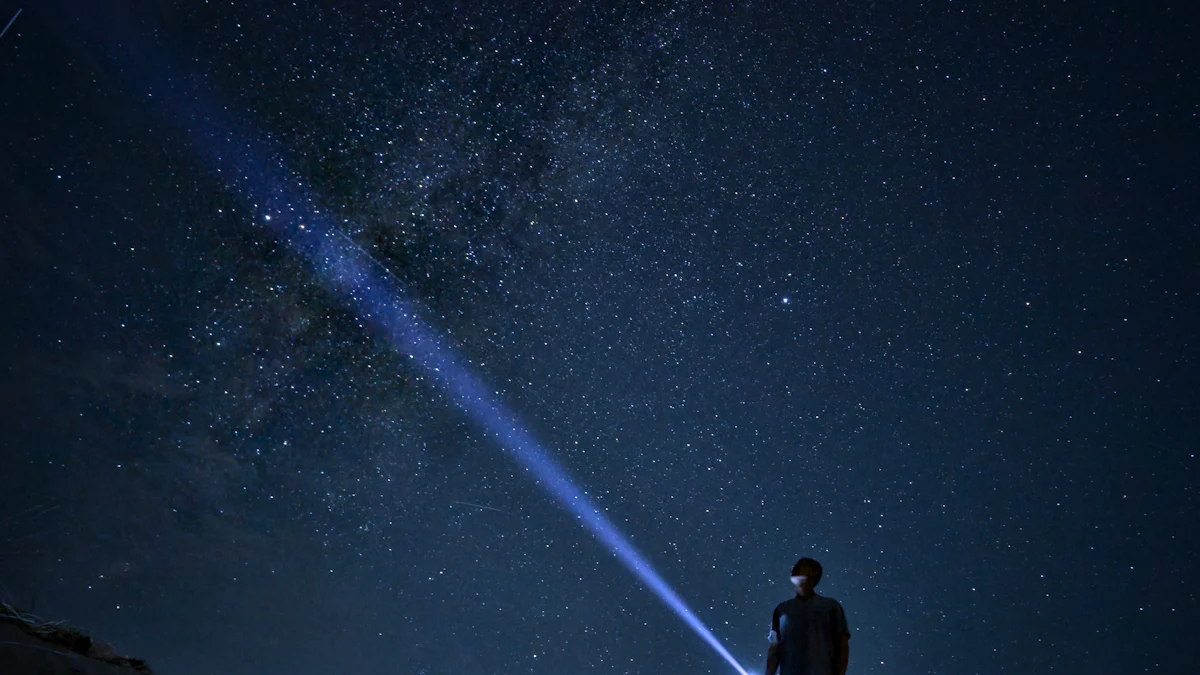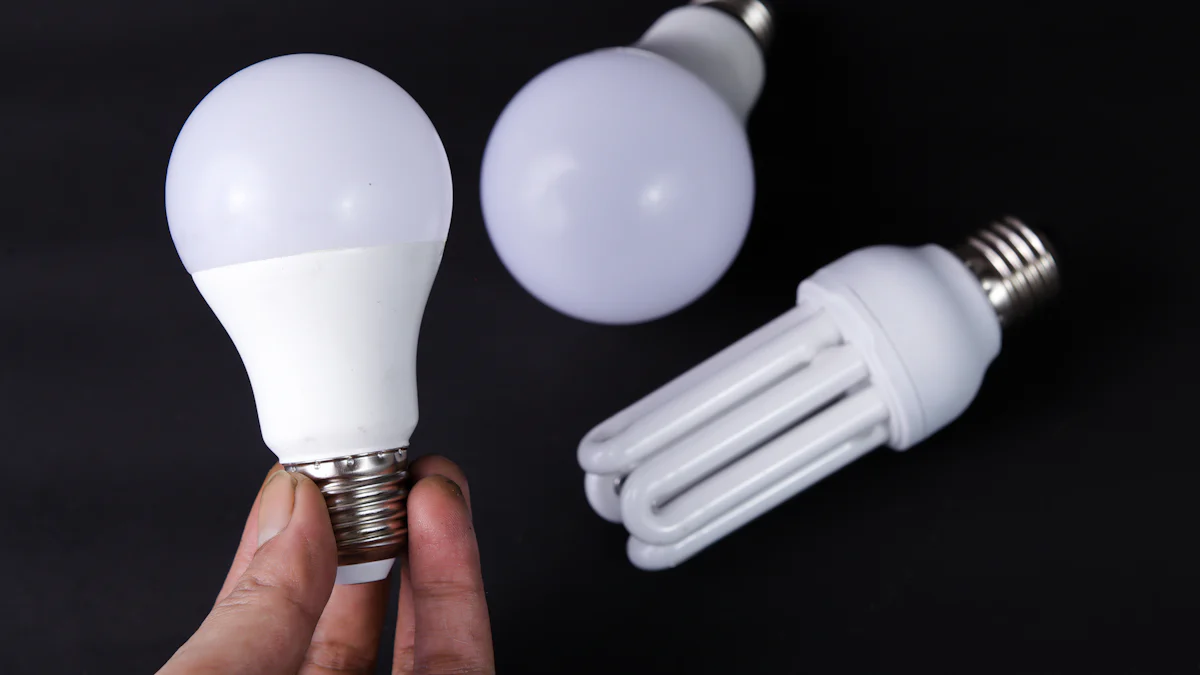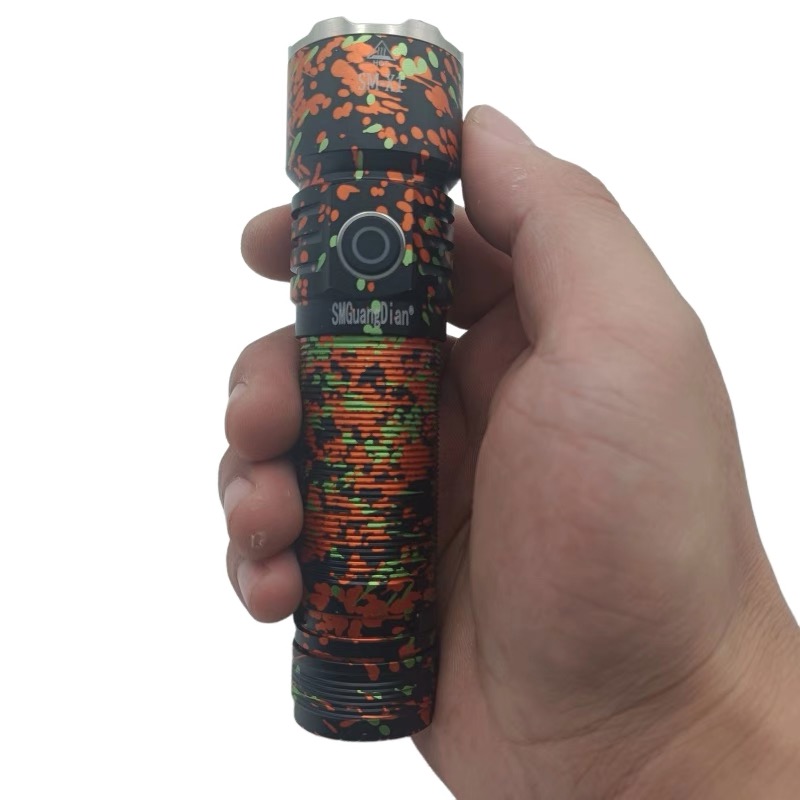LED vs. Incandescent flashlights

Choosing the right flashlight can feel overwhelming, especially when deciding between LED and incandescent flashlights. These two types differ in energy efficiency, brightness, and even environmental impact. For example, LEDs now dominate the market, making up over 60% of global flashlight sales in 2023. This shift reflects their advanced technology and efficiency. However, incandescent flashlights still offer warmer light tones, which some people prefer. Understanding these differences helps you pick a flashlight that fits your needs, whether it’s for everyday use, outdoor adventures, or specific tasks.
Key Takeaways
LED flashlights save energy, using 80-90% for light. Incandescent ones only use 10-20%.
LED flashlights last longer, up to 50,000 hours. Incandescent ones last about 1,000 hours.
LEDs are brighter and clearer, great for outdoor use or emergencies.
Incandescent flashlights give a warm glow but break easily. LEDs are stronger for tough conditions.
Buying LED flashlights saves money because they last longer and use less battery.
Overview of LED and Incandescent Flashlight Technologies
What Are LED Flashlights?
LED flashlights use light-emitting diodes (LEDs) as their light source. These diodes are small, efficient, and incredibly durable. When electricity passes through the LED, it produces light without generating much heat. This makes them highly energy-efficient. You’ll often find LED flashlights made from materials like aluminum alloy or titanium alloy, which are lightweight yet strong. Some models even use copper or brass for better heat management. These materials ensure the flashlight can handle rough conditions while staying functional.
What Are Incandescent Flashlights?
Incandescent flashlights rely on a tungsten filament inside a gas-filled bulb to produce light. When you turn one on, electricity heats the filament until it glows, creating light. This process, while simple, consumes more energy and generates a lot of heat. Most incandescent flashlights use single-cell alkaline batteries, making them compact and affordable. However, the filament burns out over time, limiting the lifespan of these flashlights. They’re great if you prefer a warmer light tone, but they’re not as efficient as their LED counterparts.
Key Features of LED Flashlights vs. Incandescent Flashlights
When comparing the two, LED flashlights stand out for their energy efficiency. They use less power, which means batteries last longer. LEDs also produce brighter light with better clarity, making them ideal for outdoor activities or emergencies. On the other hand, incandescent flashlights offer a softer, warmer glow. This can be useful for tasks where harsh light isn’t ideal. Durability is another key difference. LEDs can withstand drops and rough weather, while incandescent bulbs are more fragile. If you’re looking for long-term savings, LED flashlights are the better choice since they last much longer and require fewer replacements.
Comparison of LED and Incandescent Lights

Energy Efficiency
Power Consumption
When it comes to power consumption, LED flashlights are the clear winner. They consume significantly less energy than incandescent flashlights while delivering the same level of brightness. This makes them incredibly energy efficient. To put it into perspective:
Light Type | Efficiency |
|---|---|
Incandescent | 10-20% |
LED |
LEDs waste very little energy as heat, unlike incandescent bulbs, which lose most of their energy this way. If you’re looking for a flashlight that saves power and reduces your environmental impact, LEDs are the way to go.
Battery Life
Because LEDs are so energy efficient, they extend battery life significantly. You’ll notice that LED flashlights can run for hours, even days, on a single set of batteries. Incandescent flashlights, on the other hand, drain batteries quickly due to their higher power consumption. This difference means fewer battery replacements for LEDs, saving you money and reducing waste.
Brightness and Light Quality
Lumens and Beam Distance
LED flashlights excel in brightness. They produce around 100 lumens per watt, compared to just 8-10 lumens per watt for incandescent bulbs. This efficiency allows LEDs to achieve higher brightness levels while using less energy. Whether you need a flashlight for camping or emergencies, LEDs provide clear illumination with impressive beam distances.
Color Temperature and Clarity
Incandescent flashlights emit a warm, soft glow, which some people find comforting. However, modern LED flashlights have advanced to replicate this warmth with options like "soft white." At the same time, LEDs offer better clarity and sharper light, making them ideal for tasks requiring precision. Their versatility ensures you can find an LED flashlight that suits your preferences.
Durability and Longevity
Resistance to Impact and Weather
LED flashlights are built to last. They can withstand drops, rough handling, and harsh weather conditions. Incandescent flashlights, with their fragile filaments and glass bulbs, are more prone to damage. If you need a flashlight for outdoor adventures or emergencies, LEDs are the more reliable choice.
Lifespan of the Light Source
The lifespan of LED flashlights is another area where they shine. LEDs can last up to 50,000 hours, while incandescent bulbs typically burn out after about 1,000 hours. Here’s a quick comparison:
Type of Flashlight | Average Lifespan (hours) |
|---|---|
LED | Up to 50,000 |
Incandescent | Around 1,000 |
This longevity means fewer replacements and lower costs over time, making LEDs a smart investment.
Cost-Effectiveness
Initial Purchase Cost
When you compare the upfront cost, incandescent flashlights usually seem like the cheaper option. They’re widely available and often priced lower than LED models. If you’re on a tight budget or need a quick replacement, an incandescent flashlight might catch your eye. However, this lower price comes with trade-offs. These flashlights tend to have shorter lifespans and higher energy consumption, which can add up over time.
LED flashlights, on the other hand, might feel like a bigger investment at first. Their advanced technology and durable materials make them pricier. But don’t let that discourage you. The initial cost reflects their quality and long-term benefits, which we’ll explore next.
Long-Term Savings
Here’s where LED flashlights really shine—literally and figuratively. Their energy efficiency and long lifespan mean you’ll spend less on batteries and replacements. Imagine using the same flashlight for years without worrying about the bulb burning out. That’s the kind of reliability LEDs offer.
Incandescent flashlights, while cheaper upfront, can become costly over time. Frequent bulb replacements and higher battery usage quickly add up. If you’re thinking long-term, LED flashlights are the smarter choice. They save you money and reduce waste, making them better for your wallet and the environment.
Safety Considerations
Heat Generation
Have you ever noticed how hot incandescent flashlights get after a few minutes? That’s because they waste most of their energy as heat. This can make them uncomfortable to hold and even pose a burn risk if you’re not careful.
LED flashlights, in contrast, stay cool to the touch. Their design minimizes heat production, making them safer to use for extended periods. Whether you’re camping or working on a project, you won’t have to worry about overheating.
Risk of Bulb Breakage
Incandescent flashlights have another drawback: their fragile bulbs. The glass and filament inside can break easily if you drop the flashlight or expose it to rough conditions. This makes them less reliable for outdoor adventures or emergencies.
LED flashlights are much tougher. Their solid-state design eliminates the need for delicate parts, so they can handle impacts and harsh environments. If durability matters to you, LEDs are the way to go.
Use Case Recommendations for Flashlights

Best Scenarios for LED Flashlights
Everyday Use
LED flashlights are the best choice for daily tasks. Whether you’re searching for something in a dark closet or walking your dog at night, these lights provide reliable brightness and long battery life. Their compact size and lightweight design make them easy to carry in your pocket or bag. Plus, with their energy efficiency, you won’t have to worry about constantly replacing batteries. LED portable lights are also perfect for keeping in your car or home for quick access during unexpected situations.
Outdoor Activities and Emergencies
If you love outdoor adventures, LED flashlights are your go-to tool. They’re essential for activities like:
Camping: Navigate campsites or hiking trails after sunset.
Nighttime Fishing: Set up gear and fish in low-light conditions.
Hunting: Track animals safely with features like red-light modes.
Running: Stay visible and safe on trails at night.
Geocaching: Find hidden treasures in dark areas.
In emergencies, LED flashlights truly shine. Their brightness, which can range from 50 to 20,000 lumens, ensures you can see clearly and signal for help. They consume less energy, so they last longer when power sources are limited. Whether you’re dealing with a power outage or lost in the dark, these lights provide enhanced visibility and peace of mind.
Best Scenarios for Incandescent Flashlights
Professional or Nostalgic Uses
Incandescent flashlights still hold value in specific situations. Professionals in fields like photography or theater sometimes prefer the warmer tones of incandescent light for creating ambiance. Collectors and enthusiasts also enjoy these flashlights for their nostalgic charm. If you’re someone who appreciates vintage tools, an incandescent flashlight might be a fun addition to your collection.
Situations Requiring Warmer Light Tones
Some tasks benefit from the softer glow of incandescent flashlights. For example, if you’re reading in a dimly lit room or working on a project where harsh light could strain your eyes, the warm tones of an incandescent bulb can feel more comfortable. These flashlights are also ideal for creating a cozy atmosphere during evening gatherings or events.
When you compare LED and incandescent flashlights, the differences are clear. LEDs operate at 80-90% efficiency, while incandescent bulbs lose most of their energy as heat. LED flashlights last up to 50,000 hours, far outpacing the 1,000-hour lifespan of incandescent options. They’re brighter, more durable, and better suited for everyday use or emergencies.
That said, incandescent flashlights still have their place. Their warm glow works well for creating ambiance or for tasks where softer light is preferred. But for most scenarios, LED flashlights are the smarter choice. They’re reliable, energy-efficient, and built to last. If you want a flashlight that performs well and saves you money over time, LEDs are the way to go.
FAQ
1. Are LED flashlights better for the environment?
Yes! LED flashlights use less energy and last longer, reducing waste. They also don’t contain harmful materials like mercury. If you want an eco-friendly option, LEDs are the way to go. 🌱
2. Can I replace an incandescent bulb with an LED in my old flashlight?
In most cases, yes! Many LED replacement bulbs are available for older flashlights. Just check the size and voltage compatibility before buying. It’s an easy upgrade that improves brightness and efficiency.
3. Why do incandescent flashlights feel warmer than LEDs?
Incandescent bulbs generate heat because they waste energy as heat while producing light. LEDs, on the other hand, stay cool since they convert most energy into light. This makes LEDs safer to handle for long periods.
4. What’s the brightest flashlight available?
LED flashlights take the crown for brightness. Some models can produce up to 20,000 lumens! That’s enough to light up an entire field. Incandescent flashlights can’t compete with that level of power.
5. Do LED flashlights work in extreme weather?
Absolutely! LED flashlights are built tough. They resist cold, heat, and even rain. Their solid-state design makes them reliable in harsh conditions, whether you’re hiking in snow or caught in a storm. 🌧️
See Also
Comparing Police Flashlights With Standard Flashlights: A Guide
Enhance Your Camping Experience: Choosing Lanterns Or Flashlights
Understanding Diving Flashlights Compared To Regular Flashlights
Evaluating Green Light Flashlights Against White Light Options For Hunting
Explore The Various Categories Of Flashlights Available Today
